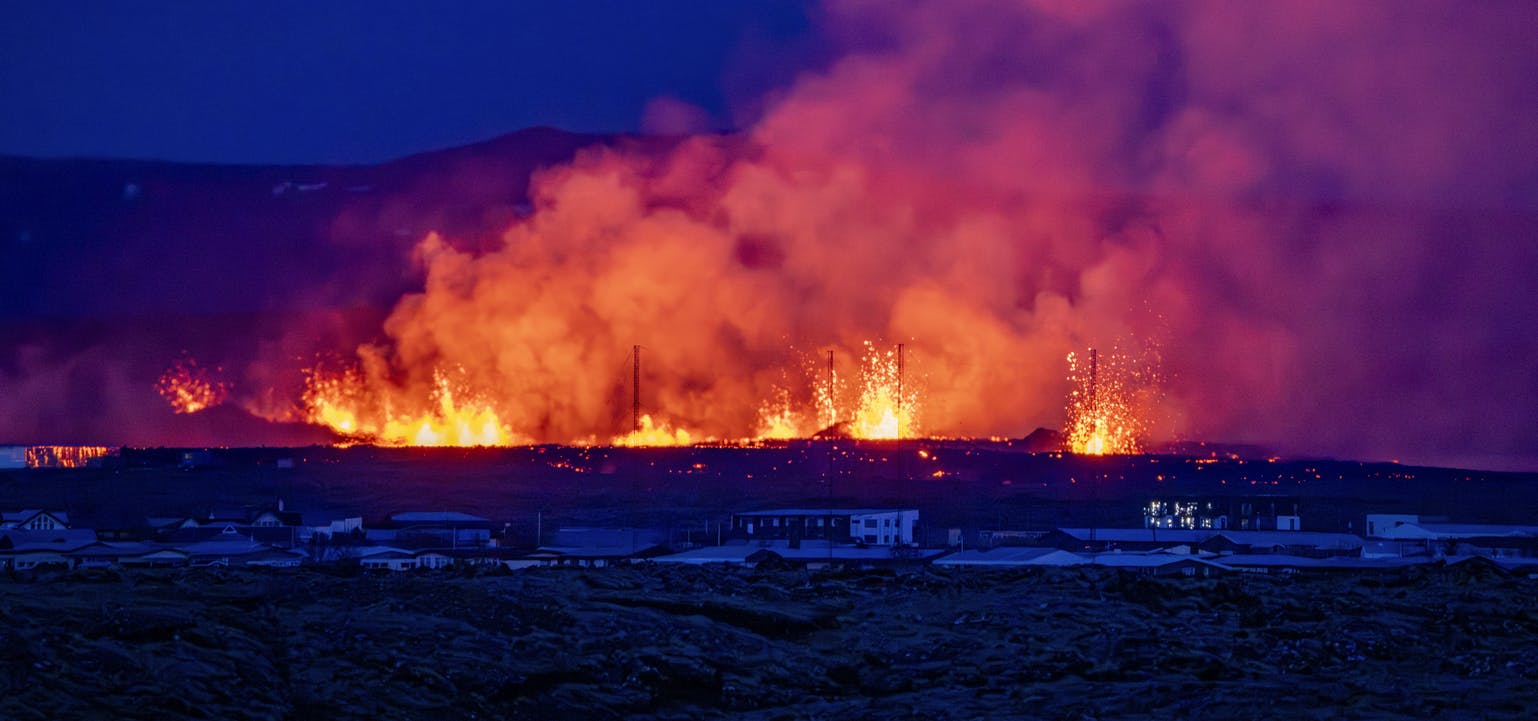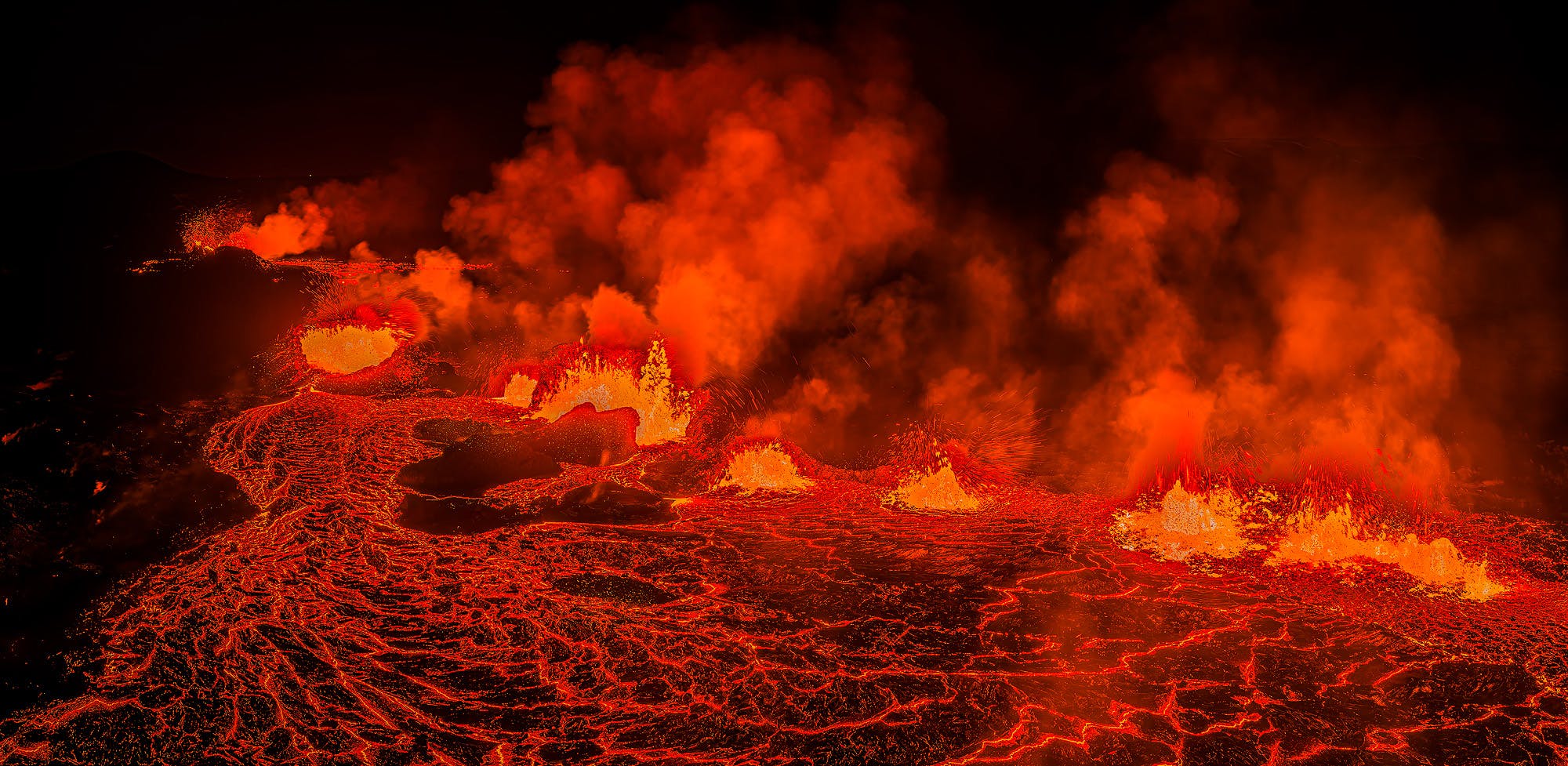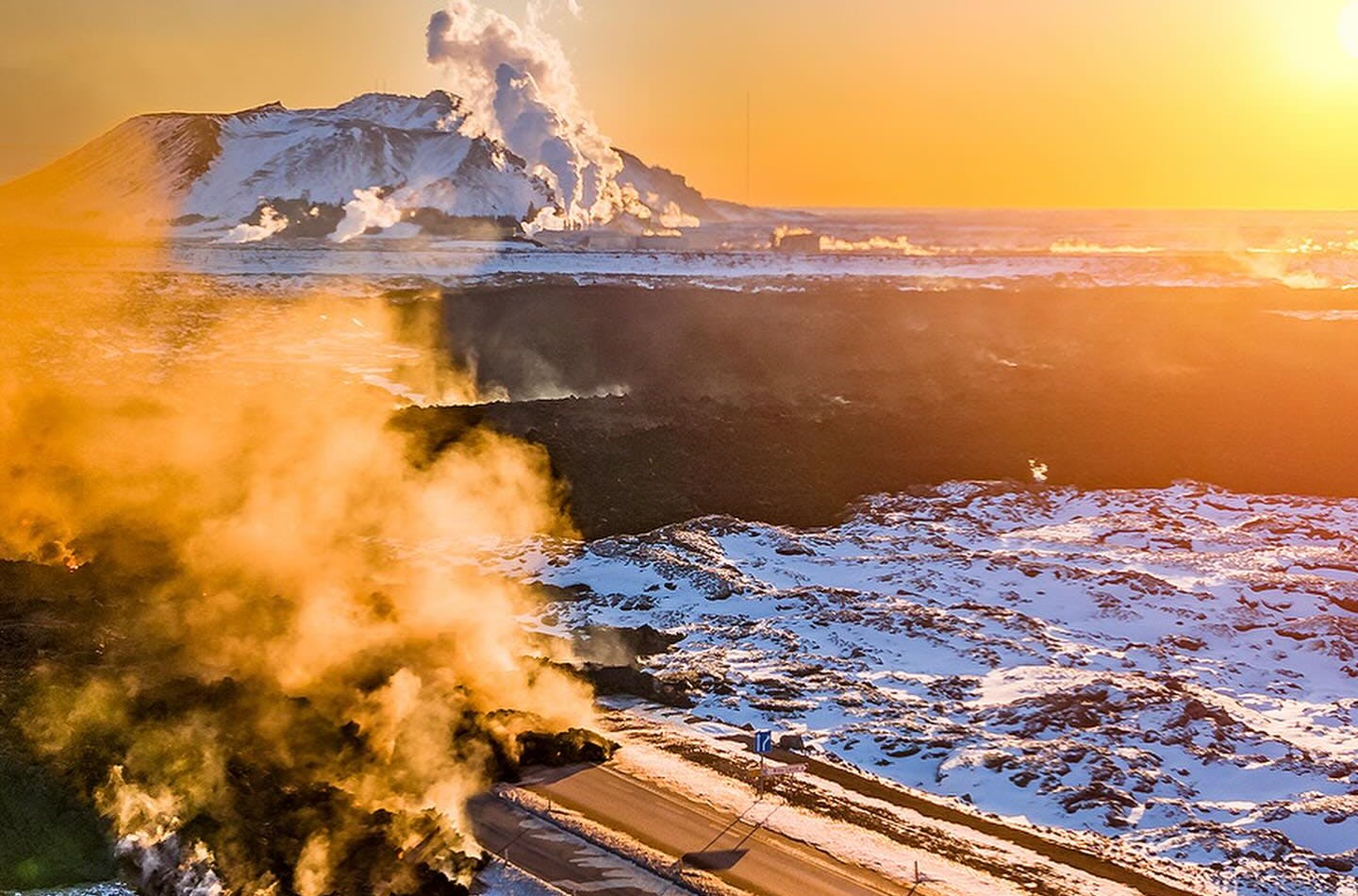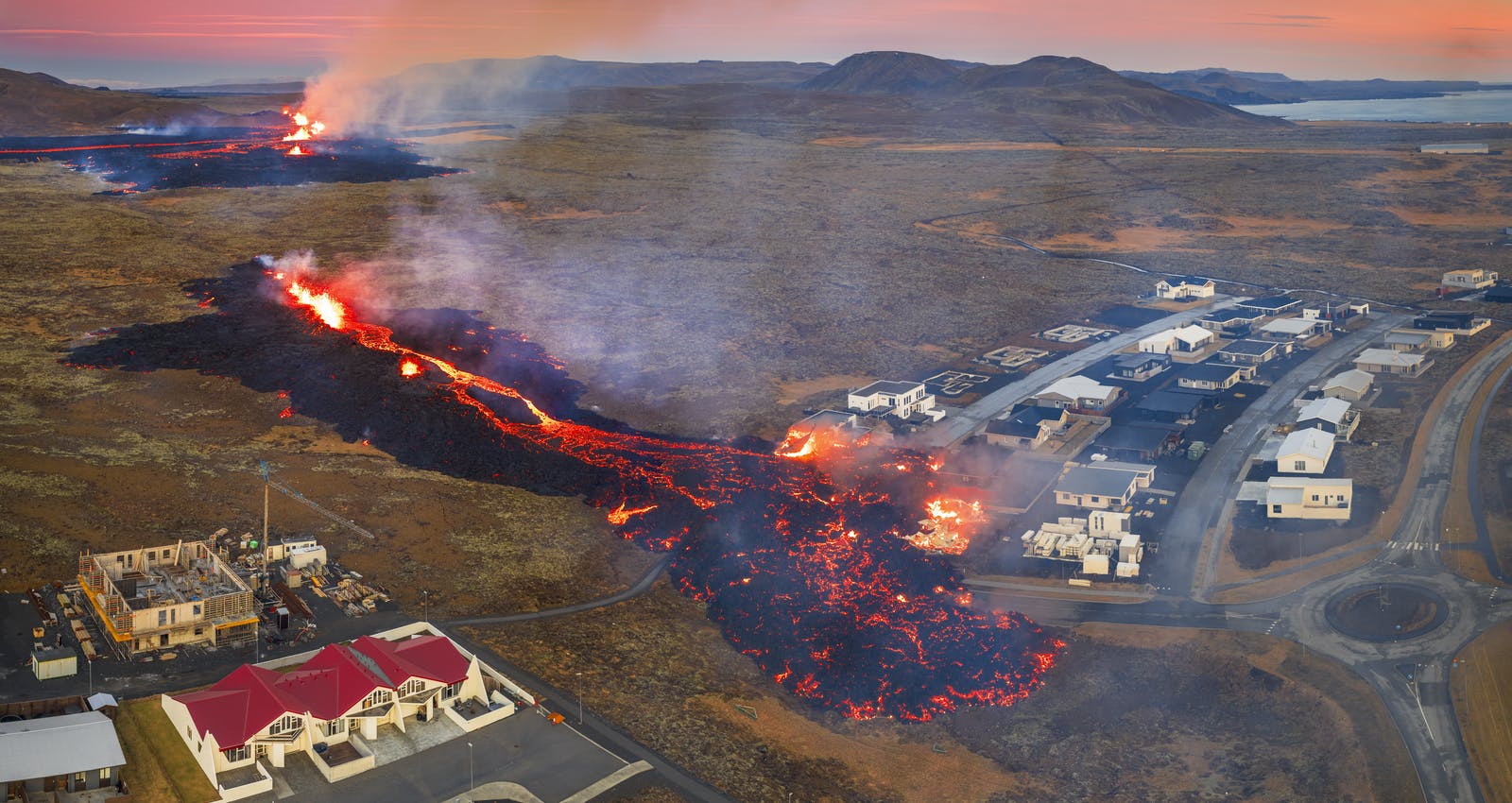
Volcanic Eruptions in Reykjanes Iceland 2024
In the cold, dark months of early 2024, Iceland once again set the world alight with its stunning volcanic eruptions. These natural phenomena captured the imagination of travellers and adventurers eager to witness the raw power of Earth's inner workings. Iceland's latest eruptions offered an unforgettable spectacle, from the vibrant lava flows painting the night sky to the thunderous sounds echoing across the land.
March Eruption 2024

A volcanic eruption commenced on the Reykjanes Peninsula at 8:23 pm on Saturday 16th March. This is the third eruption in the area in 2024.
The volcanic fissure emerged shortly after the Norwegian Meteorological Agency detected heightened seismic activity and observed alterations in the landscape, indicating an imminent magma flow. The fissure appeared between Stóra-Skógfell and Sýlingarfell, in the same location as the eruptions in February and December. It spanned slightly over 3 kilometers in length, with lava swiftly pouring out.
The lava streamed westward, crossing Grindavíkurvegur, and southeastward along the defences on the outskirts of the town of Grindavík. Its current trajectory is approaching the Suðurstrandarvegur in Reykjanes. Authorities are actively engaged in fortifying defenses and safeguarding critical infrastructure.
February Eruption 2024

A new eruption started on the Reykjanes peninsula on 8 February, the sixth volcanic eruption in three years on the peninsula. The fissure stretched about 3 km from Sundhnúkur in the south to the eastern tip of Stóra-Skógafell. The eruption's glow and smoke were clearly visible across the entire capital area.
The lava flow also hit water pipes in the region, which disrupted the supply of hot water to more than 20,000 people and led the Civil Protection Agency to raise its alert level to emergency status. Lava also flowed over the Grindavíkurvegur road before the eruption ended on 9 February.
January Eruption 2024

On the morning of 14 January 2024, Iceland once again captured the world's attention with a spectacular volcanic eruption that illuminated the dark winter skies with fiery brilliance. The eruption was characterized by vibrant lava flows and the creation of new landforms, offering a unique spectacle against the backdrop of Iceland's stark, wintry landscape.
After a series of small earthquakes, an eruption began in the Reykjanes peninsula at 08:00 Sunday morning. The Department of Civil Protection declared an emergency/distress phase for the area, and the public was asked to stay home and observe the eruption via the live webcams in the area.
A second fissure began erupting in the afternoon, just outside Grindavík's town limits, eventually reaching three evacuated homes. Grindavík remains uninhabited.
Signs leading up to the eruptions
Before some volcanic eruptions in Iceland, specific signs may indicate an eruption is more likely, such as increased seismic activity, gas emissions, and changes in temperature in the area surrounding the volcano. However, these signs are not always present, and eruptions can occur with minimal warning. In Iceland, it is common for earthquake swarms to occur.
Learn About Volcanoes and Volcanic Eruptions in Iceland

You can experience seismic events and eruptions in person in Iceland, at times, but also at Perlan's Forces of Nature exhibition. Guests get to feel the power of volcanoes, earthquakes, and geothermal energy that powers the island. Guests will learn that volcanoes form when heat and pressure build up beneath the Earth's surface. The Earth's weak points tend to be along fault lines where tectonic plates converge or diverge, as in Iceland's case.
Perlan's exhibition shows that volcanic activity in Iceland is so diverse that researchers typically speak of "volcanic systems" rather than individual volcanoes. The island has 30 active volcanic systems, each with many types of volcanoes.
FAQ
Is it safe to visit an eruption site?
There are several factors to consider before visiting an erupting volcano. When a volcano erupts, visibility can be low, and dangerous gas levels can shift quickly and be harmful. Make sure you check www.safetravel.is for the latest updates on safety conditions. The authorities can always close access to the hiking trail if gas levels reach a dangerous level or if weather conditions are poor.
Popular articles

Reykjanes Volcanoes Overview
Enjoy a complete overview of the Reykjanes Volcanoes from 2021-2024. Learn about its geology, recent activity, and visitor tips for a safe, memorable experience.

Reykjanes Peninsula Volcanoes: Sundhnúksgígar Eruptions
The anticipated volcano has erupted in the Reykjanes Peninsula, the site is being called Sundhnúkagígar. See the historic insights on the seismic activity and volcanic eruptions.

Earthquakes in Iceland
Earthquakes in Iceland are a fact of life. Each year, hundreds of small tremors shake the earth, a reminder of the country’s position on a tectonic plate boundary.

Volcano Museums and Exhibitions in Iceland
If you don't manage to visit an actively erupting volcano in Iceland - Experience its force at one of these excellent volcano museums and exhibitions in Iceland.

Top 10 Places To See the Northern Lights in Iceland
You can see the northern lights across the country, but some spots are more suitable than others. Find the best place to see the northern lights in Iceland.

Ice Caves From Reykjavik
Travel beyond the capital for a closer look at an ice cave under one of Iceland’s glaciers. If you can’t spare the time, experience Perlan’s ice cave in Reykjavik.